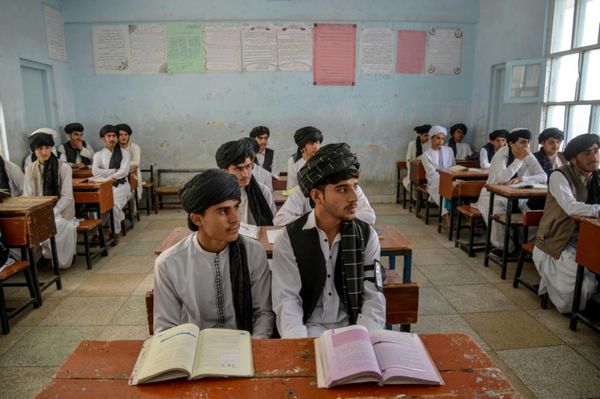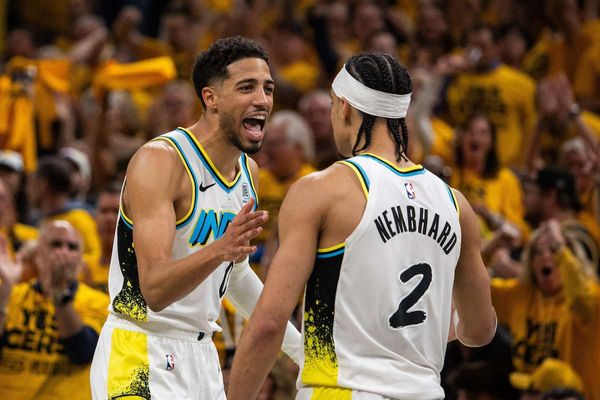
In 2019, Dallas Cowboys owner Jerry Jones signed Ezekiel Elliott to a six year, $90 million contract extension that made him the highest-paid running back in NFL history and tied him to eight-figure salary cap hits through his age 31 season in 2026. In Week 8, Elliott stood injured on the sideline as backup Tony Pollard made that deal look very, very stupid.
Pollard, drafted months before Elliott signed the pricy deal that tied him to Dallas and tied up the Cowboys’ salary sheet, shined in his fourth NFL start. He tore up the Chicago Bears’ mid-tier run defense for 131 rushing yards on only 14 carries. He added three touchdowns, including the 54-yard, third-and-one scamper that effectively shut the down on any hope of a Chicago comeback.
It's @Tp__5's world and we're just livin' in it 🤷♂️
📺: @NFLonFOX | #CHIvsDAL pic.twitter.com/p0BdbYT06c
— Dallas Cowboys (@dallascowboys) October 30, 2022
Pollard will earn a little over $1.1 million this season before heading to free agency next spring. Elliott, on the other hand, is costing Dallas more than $18.2 million this fall to average more than two fewer yards per carry than his understudy. And this may be the exact reason the Cowboys can’t retain their rising star running back in 2023.
The Cowboys have only an estimated $14.3 million in cap space next offseason — 20th-most in the NFL. Elliott’s got a cap hit of $16.7 million for the upcoming season, which could put Jones in a bind. Is he going to trade or designate Elliott a post-June 1 release, thereby saving nearly $11 million in spending room? It’s still too early to tell, but it currently doesn’t seem that way.
Cowboys owner Jerry Jones said RB Tony Pollard’s impressive performance in start Sunday vs. Bears won’t impact RB Ezekiel Elliott’s role when back from knee injury. “We’re going to go as Zeke goes.” pic.twitter.com/W5Qmto4ptC
— Michael Gehlken (@GehlkenNFL) October 30, 2022
Jones has long testified to Elliott’s greatness, even as he’s declined to merely “good.” He’s remained the team’s bell cow back despite the mounting signs Pollard was the more impactful player. Pollard has averaged more yards per carry than Elliott in all four of his NFL seasons to date (5.3 overall vs. 4.2). He’s averaged more yards after contact (2.8 per carry vs. 2.0) and broken tackles (one every 12.4 carries for Pollard vs. one every 17.5 for Elliott) in each of those years as well.
But the Cowboys continue to prioritize Elliott’s durability … and the fact they’ve got to wring every cent out of a bad investment.
Since 2020, Elliott has been paid like an elite running back but produced like an average one. His 62.2 rush yards per game in that stretch is 19th-best in the NFL. His 4.1 yards per carry rank 55th among 81 tailbacks with at least 100 carries — sandwiched between Darrel Williams and Jerick McKinnon. Those two players will combine to make just over $2 million this season.
This doesn’t just make the Cowboys’ run game less electric than it should be. We’ve already seen the repercussions of Dallas’s clogged cap in recent years.
Jones had to trade away wideout Amari Cooper and his $20 million salary for the pittance of a sixth-round pick last spring just to stay under 2022’s spending limit. On top of that, a team looking to defend its division crown was reduced to adding Dante Fowler (one year, $3 million) as its most expensive free agent arrival. Meanwhile, Elliott was making top three running back money — even now, three years after his extension — to run like a top 40 player and be eclipsed by the Day 3 pick sitting behind him.
This isn’t new or surprising in the NFL. The Bears provided compelling evidence of their own from the opposite sideline. Veteran RB1 David Montgomery played totally average football, rushing for 53 yards on 15 carries. He was outshined by Khalil Herbert, who was drafted two years after Montgomery in the sixth round. The second-year back finished his day with 16 carries for 99 yards and a touchdown.
Of course, since Montgomery is playing out his rookie contract this isn’t a situation where the Bears are paying big money for a player to be outshined on his own depth chart. Chicago’s got cap woes of its own this season, but it can promote Herbert to RB1 next fall and spend its near $100 million of space elsewhere in an effort to build around Justin Fields. That’s a luxury the Cowboys didn’t have the last three years, leading to the cap crunch that hasn’t affected their win-loss total in 2022 but does present depth concerns — especially along the offensive line.
Dallas’s ability to find discount production behind its own high-priced running back is a lesson. Pollard stepped into the spotlight and delivered the best game of his young career, but it was nothing unexpected, even from a former Day 3 pick. These stories persist, whether we’re talking about Herbert or Rhamondre Stevenson or James Robinson or Eno Benjamin or … well, you get it.
It’s one thing to reward a player for his hard work if you’ve got cap space and continuity is a priority. It’s another thing if you’ve got a mega-extension coming for a young quarterback and a constellation of star players on big deals across the roster. Elliott’s extension fell into the latter category.
Pollard’s Week 8 explosion was another reason to wince when looking at the Cowboys’ cap sheet. But it hasn’t affected Dallas too negatively after a division-winning 2021 and what looks like a pretty solid playoff campaign in 2022. That won’t be the norm for other teams who fail to learn from Jerry Jones’ mistake.







